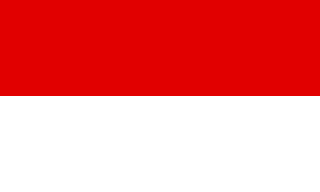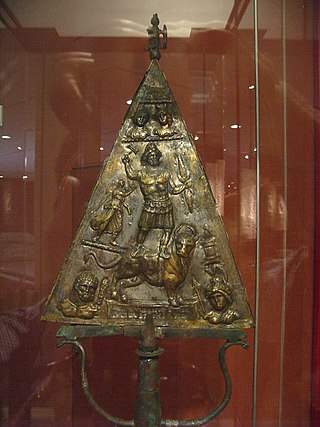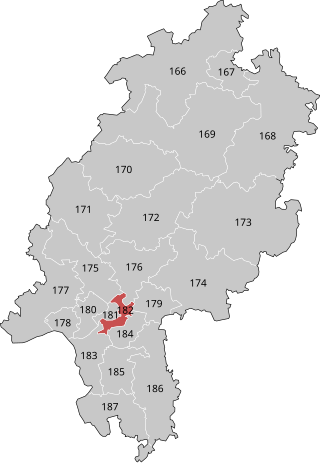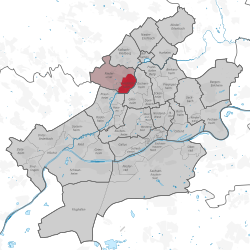
Frankfurt am Main is the most populous city in the German state of Hesse. Its 773,068 inhabitants as of 2022 make it the fifth-most populous city in Germany,. Located in the foreland of the Taunus on its namesake Main, it forms a continuous conurbation with Offenbach am Main; its urban area has a population of over 2.7 million. The city is the heart of the larger Rhine-Main metropolitan region, which has a population of more than 5.8 million and is Germany's second-largest metropolitan region after the Rhine-Ruhr region and the fourth biggest metropolitan region by GDP in the European Union. Frankfurt is home to the European Central Bank, one of the institutional seats of the European Union, while Frankfurt's central business district lies about 90 km (56 mi) northwest of the geographic center of the EU at Gadheim in Lower Franconia. Like France and Franconia, the city is named after the Franks. Frankfurt is the largest city in the Rhenish Franconian dialect area.

Mithraism, also known as the Mithraic mysteries or the Cult of Mithras, was a Roman mystery religion centered on the god Mithras. Although inspired by Iranian worship of the Zoroastrian divinity (yazata) Mithra, the Roman Mithras was linked to a new and distinctive imagery, and the level of continuity between Persian and Greco-Roman practice remains debatable. The mysteries were popular among the Imperial Roman army from the 1st to the 4th century CE.

Hesse or Hessia, officially the State of Hesse, is a state in Germany. Its capital city is Wiesbaden, and the largest urban area is Frankfurt, which is also the country's principal financial centre. Two other major historic cities are Darmstadt and Kassel. With an area of 21,114.73 square kilometers and a population of over six million, it ranks seventh and fifth, respectively, among the sixteen German states. Frankfurt Rhine-Main, Germany's second-largest metropolitan area, is mainly located in Hesse.

Darmstadt is a city in the state of Hesse in Germany, located in the southern part of the Rhine-Main-Area. Darmstadt has around 160,000 inhabitants, making it the fourth largest city in the state of Hesse after Frankfurt am Main, Wiesbaden, and Kassel.

The London Mithraeum, also known as the Temple of Mithras, Walbrook, is a Roman Mithraeum that was discovered in Walbrook, a street in the City of London, during a building's construction in 1954. The entire site was relocated to permit continued construction and this temple of the mystery god Mithras became perhaps the most famous 20th-century Roman discovery in London.

Eschersheim is a city district of Frankfurt am Main, Germany. It is part of the Ortsbezirk Mitte-Nord and is subdivided into the Stadtbezirke Eschersheim-Nord and Eschersheim-Süd.

A Mithraeum(Latin pl. Mithraea), sometimes spelled Mithreum and Mithraion, is a Mithraic temple, erected in classical antiquity by the worshippers of Mithras. Most Mithraea can be dated between 100 BC and 300 AD, mostly in the Roman Empire.

The Saalburg is a Roman fort located on the main ridge of the Taunus, northwest of Bad Homburg, Hesse, Germany. It is a cohort fort, part of the Limes Germanicus, the Roman linear border fortification of the German provinces. The Saalburg, located just off the main road roughly halfway between Bad Homburg and Wehrheim is the most completely reconstructed Roman fort in Germany. Since 2005, as part of the Upper Limes, it forms part of a UNESCO World Heritage site. In the modern numbering system for the limes, it is ORL 11.

The Altstadt is a quarter of Frankfurt am Main, Germany. It is part of the Ortsbezirk Innenstadt I and is located on the northern Main river bank. It is completely surrounded by the Innenstadt district, Frankfurt's present-day city centre. On the opposite side of the Main is the district of Sachsenhausen.

Vindobona was a Roman military camp in the province of Pannonia, located on the site of the modern city of Vienna in Austria. The settlement area took on a new name in the 13th century, being changed to Berghof, or now simply known as Alter Berghof.

The Frankfurter Judengasse was the Jewish ghetto of Frankfurt and one of the earliest ghettos in Germany. It existed from 1462 until 1811 and was home to Germany's largest Jewish community in early modern times.

Carrawburgh is a settlement in Northumberland. In Roman times, it was the site of a 3+1⁄2-acre (1.5 ha) auxiliary fort on Hadrian's Wall called Brocolitia, Procolita, or Brocolita.

Jupiter Dolichenus was a Roman god whose mystery cult was widespread in the Roman Empire from the early-2nd to mid-3rd centuries AD. Like several other figures of the mystery cults, Jupiter Dolichenus was one of the so-called 'oriental' gods; that is Roman re-inventions of ostensibly foreign figures in order to give their cults legitimacy and to distinguish them from the cults of the traditional Roman gods.

Georg Ludwig Kriegk was a German historian and archivist born in Darmstadt.

The A line is the north-to-south main line of the Frankfurt U-Bahn. It is the oldest and longest line of the U-Bahn system. Served by four routes starting at Südbahnhof Railway Station in Sachsenhausen, the A line runs through downtown Frankfurt up to Heddernheim Station in the north of the city, where it branches out to Ginnheim, Oberursel (U3), Riedberg and Bad Homburg (U2). The U9 service between Ginnheim, Riedberg and Nieder-Eschbach does not use the central section and tunnels of the line, making it the only light rail service of the network that does not serve downtown Frankfurt. The Riedberg and Ginnheim branches were planned as parts of the future D line subway but are operationally part of the A line until the D line development and construction is finished.

Nida was an ancient Roman town in the area today occupied by the northwestern suburbs of Frankfurt am Main, Germany, specifically Frankfurt-Heddernheim, on the edge of the Wetterau region. At the time of the Roman empire, it was the capital of the Civitas Taunensium. The name of the settlement is known thanks to written sources from Roman times and probably derives from the name of the adjacent river Nidda.
The following is a timeline of the history of the city of Frankfurt am Main, Germany.

The Wetterau Limes is the name given in the field of historical research to that part of the Upper Germanic-Rhaetian Limes which enclosed the region that became known later as the Wetterau in the German state of Hesse.

Frankfurt am Main II is an electoral constituency represented in the Bundestag. It elects one member via first-past-the-post voting. Under the current constituency numbering system, it is designated as constituency 182. It is located in southern Hesse, comprising the eastern part of the city of Frankfurt am Main.

The Arch of Dativius Victor in Mainz is one of the most important reconstructed Roman monuments in Germany. The structure dates from the middle of the 3rd century and was once the central passageway of a portico of a public building in Mogontiacum.



























